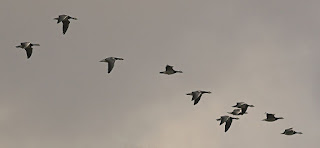Bird Migration
Fledgling relocation is the general regular development, frequently north and south along a flyway, amongst reproducing and wintering grounds. Numerous types of winged creature relocate. Relocation conveys high expenses in predation and mortality, including from chasing by people, and is driven fundamentally by accessibility of sustenance. It happens fundamentally in the northern side of the equator, where flying creatures are channeled on to particular courses by common obstructions, for example, the Mediterranean Sea or the Caribbean Sea.
Truly, movement has been recorded as much as 3,000 years back by Ancient Greek writers including Homer and Aristotle, and in the Book of Job, for species, for example, storks, turtle birds, and swallows. All the more as of late, Johannes Leche started recording dates of entries of spring vagrants in Finland in 1749, and investigative studies have utilized procedures including winged creature ringing and satellite following. Dangers to transient flying creatures have developed with living space devastation particularly of stopover and wintering destinations, and additionally structures, for example, electrical cables and wind ranches.
The Arctic tern holds the long-separate relocation record for fowls, going between Arctic reproducing grounds and the Antarctic every year. A few types of tubenoses (Procellariiformes, for example, gooney birds circle the earth, flying over the southern seas, while others, for example, Manx shearwaters relocate 14,000 km (8,700 mi) between their northern reproducing grounds and the southern sea. Shorter relocations are regular, including altitudinal movements on mountains, for example, the Andes and Himalayas.
The planning of movement is by all accounts controlled essentially by changes in day length. Moving winged animals explore utilizing heavenly signals from the sun and stars, the world's attractive field, and likely likewise mental maps.
